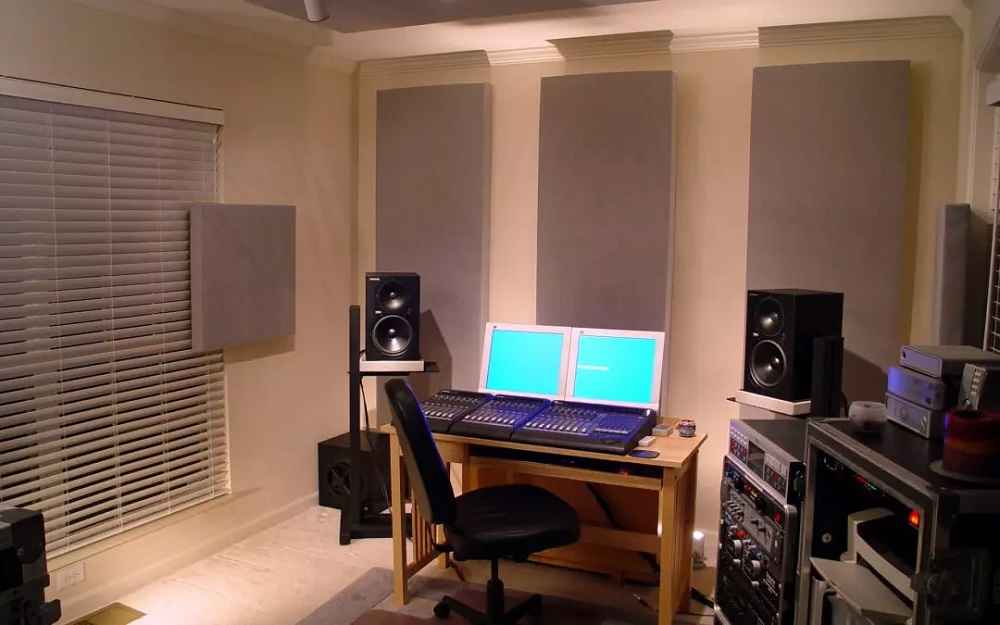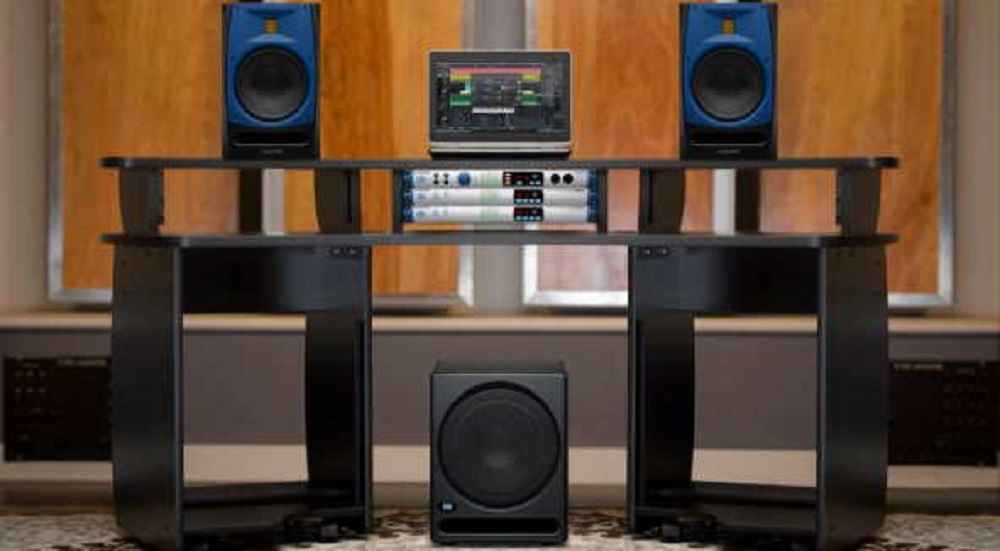Studio monitors and subwoofers are two essential components in music production.
Studio monitors are speakers designed specifically for use in a recording studio or home music production setup, while subwoofers are speakers designed to reproduce low-frequency sounds that are often missing or distorted in other speakers.

In this article, we will explore the question of whether you need a subwoofer with studio monitors and what factors to consider when making this decision.
Understanding Studio Monitors
Studio monitors are speakers designed to provide an accurate representation of the audio being produced.
Unlike consumer speakers, which often have a “boost” in the low-end or high-end frequencies to make music sound more appealing, studio monitors are designed to provide a flat frequency response.
This allows the audio engineer or music producer to accurately hear what the mix sounds like, so that any necessary adjustments can be made.
Key Features of Studio Monitors
The key features of studio monitors include a flat frequency response, accurate representation of sound, and a large sweet spot. The flat frequency response means that the speakers will not exaggerate or add any color to the sound.
This is important for music production because the audio engineer or producer needs to hear the mix as it truly is, without any added artificial coloration. The large sweet spot refers to the area in front of the speakers where the sound is most accurate and consistent.
How Studio Monitors Work
Studio monitors work by converting an electrical signal into an acoustic signal, which is then transmitted through the air to the listener.
The electrical signal is passed through the speakers’ components, including the woofer, tweeter, and crossover, to produce sound.
The woofer is responsible for reproducing the low-frequency sounds, while the tweeter is responsible for the high-frequency sounds.
The crossover divides the audio signal into different frequency ranges, directing the low-frequency sounds to the woofer and the high-frequency sounds to the tweeter.
Importance of Studio Monitors in Music Production
Studio monitors are essential in music production because they provide a clear and accurate representation of the audio being produced.
This allows the audio engineer or producer to make any necessary adjustments to the mix, ensuring that the final product sounds as intended. Without studio monitors, it would be difficult to produce professional-quality audio.

Understanding Subwoofers
Subwoofers are speakers designed to reproduce low-frequency sounds, such as bass and drums. These sounds are often missing or distorted in other speakers, making it difficult to accurately hear the mix.
Subwoofers can provide a clearer and more accurate representation of the low-frequency sounds, allowing the audio engineer or producer to make any necessary adjustments.
Key Features of Subwoofers
The key features of subwoofers include a large driver size, dedicated amplification, and adjustable crossover frequencies. The large driver size allows the subwoofer to produce deep, powerful bass.
Dedicated amplification ensures that the subwoofer has enough power to accurately reproduce low-frequency sounds.
Adjustable crossover frequencies allow the user to adjust the frequency range that the subwoofer will reproduce, ensuring that it is working optimally with the studio monitors.
How Subwoofers Work
Subwoofers work by converting an electrical signal into an acoustic signal, just like studio monitors. The difference is that subwoofers are specifically designed to reproduce low-frequency sounds.
The electrical signal is passed through the subwoofer’s components, including the driver and crossover, to produce sound.
The driver is responsible for reproducing the low-frequency sounds, while the crossover is responsible for directing the low-frequency sounds to the subwoofer.
Importance of Subwoofers in Music Production
Subwoofers are important in music production because they provide a clearer and more accurate representation of the low-frequency sounds in the mix.
This allows the audio engineer or producer to make any necessary adjustments to these sounds, ensuring that the final product sounds as intended.
Without a subwoofer, it would be difficult to accurately hear the low-frequency sounds, which can have a significant impact on the overall sound of the mix.
Factors to Consider When Deciding Whether to Use a Subwoofer with Studio Monitors
Frequency Range of Studio Monitors
One of the main factors to consider when deciding whether to use a subwoofer with studio monitors is the frequency range of the studio monitors.
If the studio monitors have a flat frequency response and accurately reproduce low-frequency sounds, then a subwoofer may not be necessary.
However, if the studio monitors do not accurately reproduce low-frequency sounds, then a subwoofer can help to improve the overall sound of the mix.
Room Size and Acoustics
The size and acoustics of the room where the studio monitors are being used can also play a role in the decision of whether to use a subwoofer. If the room is small and has a lot of reflective surfaces, such as hard floors and walls, then a subwoofer may not be necessary.
However, if the room is larger and has a lot of absorptive surfaces, such as carpets and curtains, then a subwoofer can help to improve the overall sound of the mix.
Type of Music Being Produced
The type of music being produced can also play a role in the decision of whether to use a subwoofer with studio monitors.
If the music being produced has a lot of low-frequency sounds, such as bass and drums, then a subwoofer can help to accurately reproduce these sounds.
However, if the music being produced has minimal low-frequency sounds, then a subwoofer may not be necessary.
Personal Preferences
Finally, personal preferences should also be considered when deciding whether to use a subwoofer with studio monitors. Some audio engineers and producers may prefer the sound of a subwoofer and may find that it helps to improve the overall sound of the mix.
Others may prefer the sound of the studio monitors alone and may find that a subwoofer is not necessary.

Conclusion
In conclusion, whether to use a subwoofer with studio monitors is a decision that should be based on several factors, including the frequency range of the studio monitors, the size and acoustics of the room, the type of music being produced, and personal preferences.
By considering all of these factors and making an informed decision, audio engineers and producers can ensure that their music production setup provides the sound quality they desire.
What is the difference between a studio monitor and a subwoofer?
A studio monitor is a type of speaker that is designed for use in music production and is used to accurately reproduce the sounds in a mix.
A subwoofer, on the other hand, is a type of speaker that is specifically designed to reproduce low-frequency sounds, such as bass and drums.
Studio monitors and subwoofers can be used together to provide a more accurate representation of the sounds in a mix, but they can also be used separately.
Do I need a subwoofer if I have large studio monitors?
Not necessarily. The size of the studio monitors is not the only factor to consider when deciding whether to use a subwoofer.
Other factors, such as the frequency range of the studio monitors, the size and acoustics of the room, and the type of music being produced, should also be considered.
Can a subwoofer improve the sound quality of my studio monitors?
Yes, a subwoofer can improve the sound quality of studio monitors by providing a clearer and more accurate representation of the low-frequency sounds in the mix.
However, the use of a subwoofer is not always necessary and may depend on the specific needs and setup of the recording studio or home music production environment.
How does the size and acoustics of the room affect the decision of whether to use a subwoofer with studio monitors?
The size and acoustics of the room can play a role in the decision of whether to use a subwoofer with studio monitors. If the room is small and has a lot of reflective surfaces, such as hard floors and walls, then a subwoofer may not be necessary.
However, if the room is larger and has a lot of absorptive surfaces, such as carpets and curtains, then a subwoofer can help to improve the overall sound of the mix.
What is the role of personal preferences in the decision of whether to use a subwoofer with studio monitors?
Personal preferences should also be considered when deciding whether to use a subwoofer with studio monitors. Some audio engineers and producers may prefer the sound of a subwoofer and may find that it helps to improve the overall sound of the mix.
Others may prefer the sound of the studio monitors alone and may find that a subwoofer is not necessary. The decision of whether to use a subwoofer should take into account both technical considerations and personal preferences.
